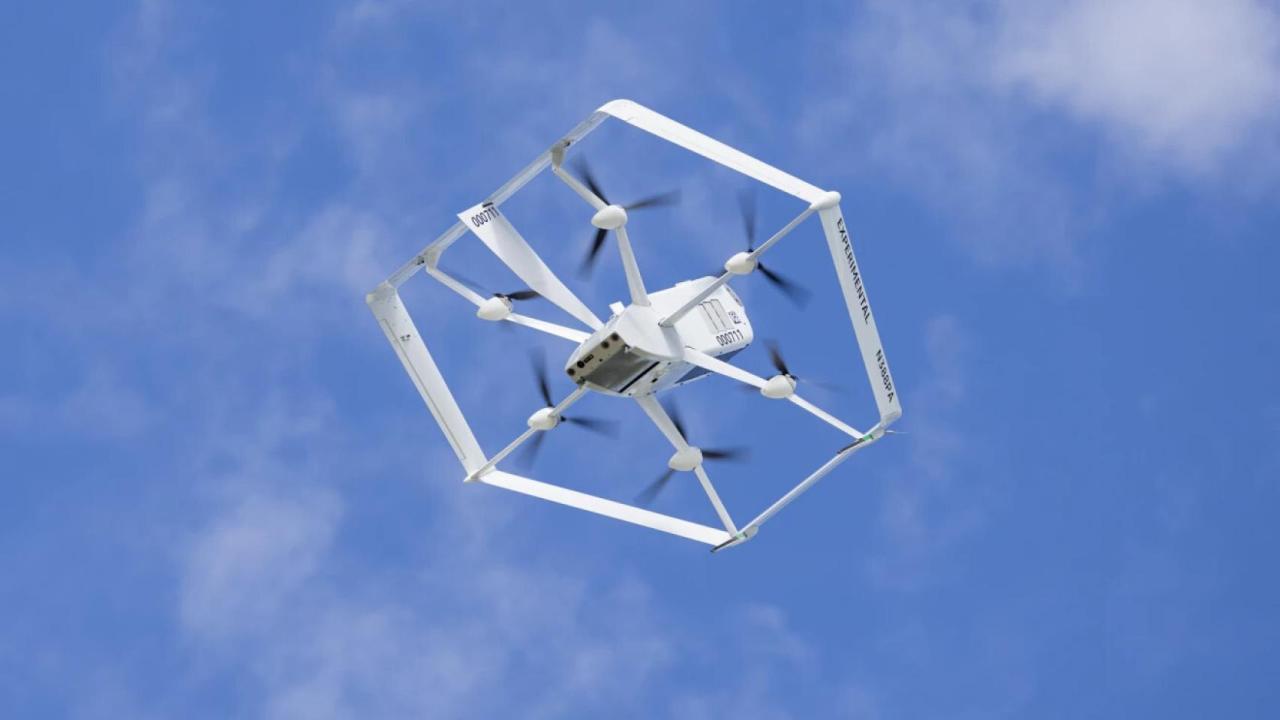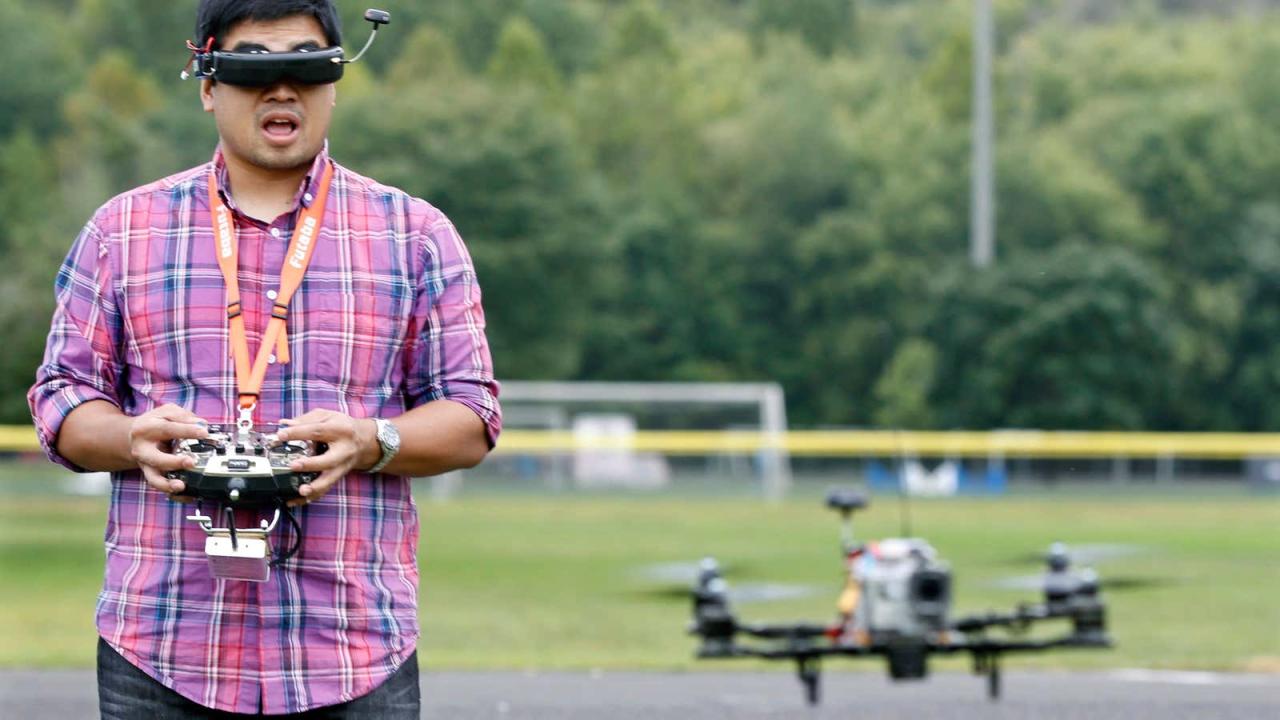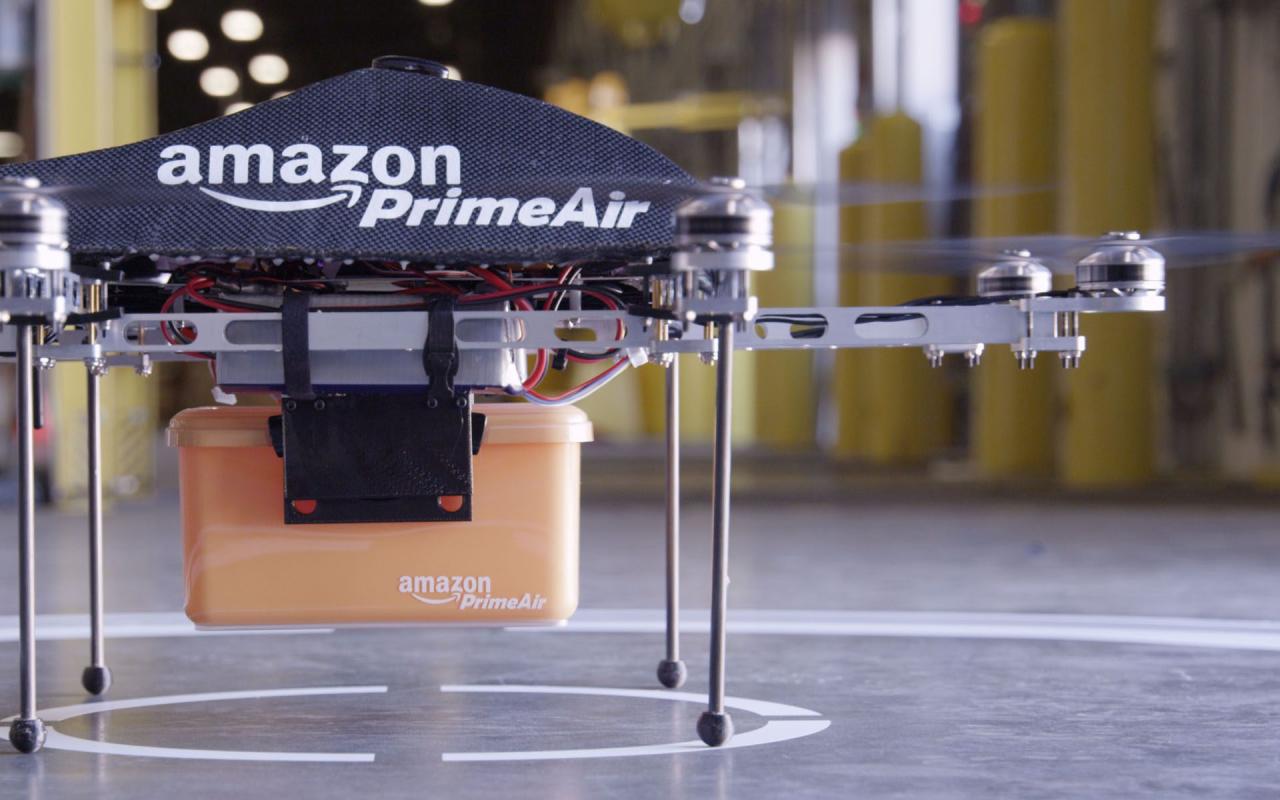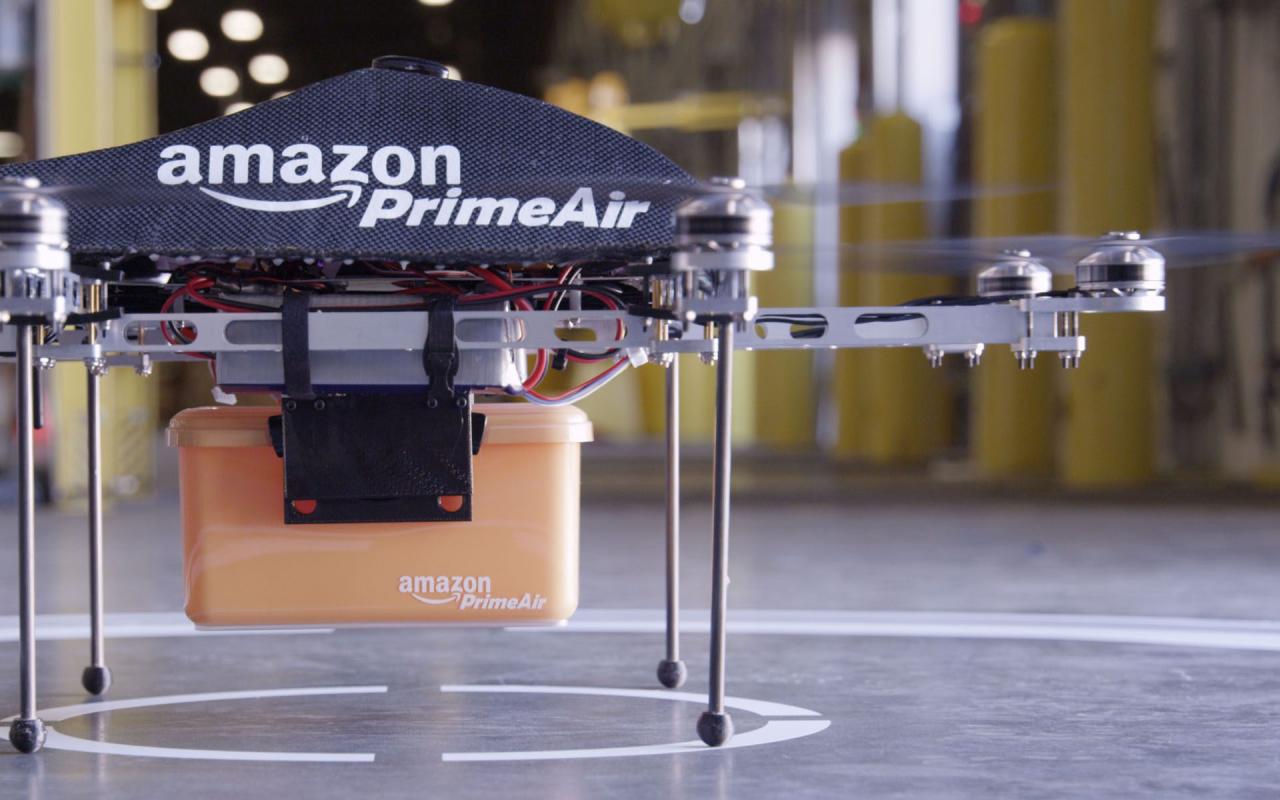Amazon drone delivery locations are rapidly expanding, revolutionizing how we receive packages. This isn’t just about faster delivery; it’s about reimagining logistics, impacting communities, and raising intriguing questions about the future of transportation. We’ll explore the current state of Amazon’s drone delivery program, the infrastructure needed to support it, the legal hurdles involved, and the potential social and economic consequences.
Get ready for a detailed look at this innovative and evolving system.
From the initial test flights to the current operational areas, we’ll trace the journey of Amazon’s Prime Air. We’ll delve into the technological requirements, comparing urban and rural infrastructure needs. We’ll also examine the regulatory landscape, potential legal challenges, and the broader societal impact of this technology – both positive and negative. Finally, we’ll speculate on future expansion plans and the role of emerging technologies.
Current Amazon Drone Delivery Program Status: Amazon Drone Delivery Locations

Amazon’s Prime Air drone delivery program, aiming to revolutionize package delivery with autonomous drones, has seen significant development but remains in a relatively limited operational phase. While the initial vision of widespread drone delivery is still unfolding, substantial progress has been made in testing, regulatory approvals, and limited real-world deployments. This section details the program’s timeline, current operational areas, and the types of goods being delivered.
Amazon Prime Air Program Timeline
The Amazon Prime Air program’s development is a multi-stage process involving extensive testing, regulatory hurdles, and gradual expansion. Initial testing began in 2016 with various drone prototypes undergoing rigorous flight tests. Subsequent years saw refinements in drone technology, software development, and airspace integration strategies. The program faced and continues to face challenges related to regulatory approvals, public perception, and technological limitations such as weather dependency and flight range.
While a precise, publicly available timeline for each phase is limited due to Amazon’s strategic communication, the journey from concept to limited deployment reflects a complex and iterative process. Key milestones include successful test deliveries in various locations and the securing of necessary certifications from relevant aviation authorities. The ultimate goal is to achieve fully autonomous, large-scale drone delivery operations, though the exact timeframe remains uncertain.
Current Operational Areas for Amazon Drone Delivery
Currently, Amazon Prime Air operates in a limited number of locations. Precise delivery volumes are not publicly released by Amazon for competitive reasons. The following table provides a simplified overview. Note that this data may not be entirely up-to-date due to the dynamic nature of the program’s expansion.
| Location | Launch Date (Approximate) | Delivery Volume | Notable Challenges |
|---|---|---|---|
| College Station, Texas | 2022 | Limited; data not publicly available | Integration with existing airspace management systems; weather conditions; public acceptance. |
| Lockeford, California | 2022 | Limited; data not publicly available | Similar to College Station; additional challenges related to geographical terrain. |
| Other locations (under development) | Ongoing | N/A | Regulatory approvals, infrastructure development, and public perception continue to be key hurdles. |
Types of Goods Currently Delivered via Drone
Amazon’s drone delivery program currently focuses on smaller, lighter packages suitable for drone transport. These typically include everyday items such as household goods, personal care products, and smaller electronics. The weight and size restrictions are dictated by the drone’s carrying capacity and safety regulations. Larger or heavier items are still primarily delivered via traditional methods. The selection of goods offered via drone delivery is likely to expand as drone technology advances and regulatory frameworks evolve, allowing for greater payload capacity and operational range.
Infrastructure Requirements for Drone Delivery Locations

Setting up a successful Amazon drone delivery system requires a robust and well-planned infrastructure. This infrastructure goes beyond simply having drones; it involves strategically placed hubs, communication networks, and safety features to ensure efficient and safe delivery operations. The specific requirements vary significantly depending on the location’s characteristics, whether urban or rural.
Drone Delivery Hub Components
A typical drone delivery hub needs several key components working together seamlessly. These components are essential for the smooth operation of drone delivery services.Imagine a central location, perhaps a repurposed shipping container or a small warehouse, acting as the hub. This hub is the nerve center for drone operations in a defined geographic area.
A schematic diagram of a typical drone delivery hub would show:
Central Area: This is the main workspace, containing charging stations, drone maintenance areas, and packaging stations.
Drone Landing Pads: Multiple landing pads are strategically located around the central area, allowing for multiple drones to land and take off simultaneously, improving efficiency. These pads should be designed for safe and precise drone landings, considering varying weather conditions.
Charging Stations: A dedicated area with multiple charging stations, allowing for rapid battery swapping and charging. The system should be designed to monitor battery health and automatically manage charging cycles to optimize battery lifespan.
Communication Network: A robust communication system, including high-bandwidth internet connectivity and dedicated drone communication channels, is essential for real-time tracking, control, and data transmission between the drones and the central hub. This might involve a combination of cellular, Wi-Fi, and potentially specialized drone communication protocols.
Security System: The hub requires a comprehensive security system, including physical security measures (e.g., fences, cameras) and cybersecurity measures (e.g., network firewalls, intrusion detection systems) to protect against theft, vandalism, and unauthorized access.
Package Handling Area: A designated area for receiving, sorting, and preparing packages for drone delivery. This includes appropriate conveyor systems or other automated systems for efficient package handling.
Weather Monitoring System: Real-time weather data is crucial for safe drone operation. The hub needs access to accurate weather forecasts and real-time weather conditions to suspend operations when necessary. This helps prevent drone accidents caused by adverse weather conditions.
Urban vs. Rural Infrastructure Requirements
The infrastructure needed for drone delivery varies significantly between urban and rural environments.
| Feature | Urban Requirement | Rural Requirement | Cost Difference |
|---|---|---|---|
| Landing Pad Location | Requires rooftop access or designated urban areas; potentially needs noise mitigation measures due to proximity to residential areas. Requires complex regulatory approvals and possibly integration with existing urban infrastructure. | More flexible location options; fewer regulatory hurdles and less need for noise reduction; potentially requires more extensive land acquisition. | Higher in urban areas due to land costs and regulatory complexities. Difficult to estimate precisely due to varying local regulations and land values. |
| Communication Network | Requires robust cellular and/or Wi-Fi coverage, potentially needing supplementary infrastructure to overcome signal blockage in dense urban areas. | May rely more on cellular networks with potential need for repeater stations to cover wider areas with less dense population. | Potentially higher in urban areas due to signal interference and need for more advanced infrastructure. |
| Security | Higher security needs due to higher risk of theft or vandalism in densely populated areas. | Security needs are relatively lower but may need to address issues of remoteness and potential wildlife interference. | Higher in urban areas due to higher crime rates. |
| Regulatory Approvals | More complex and costly due to stringent regulations in urban areas, including airspace restrictions and noise ordinances. | Generally simpler and less costly due to less restrictive regulations in rural areas. | Significantly higher in urban areas due to the increased regulatory burden. |
Regulatory and Legal Aspects of Amazon Drone Delivery Locations

Setting up drone delivery locations requires navigating a complex web of regulations and legal considerations. Amazon, like any company using drones for commercial purposes, must comply with various rules and laws at the local, state, and federal levels, impacting everything from airspace access to liability in case of accidents. Understanding these legal frameworks is crucial for successful and safe drone delivery operations.
Key Regulatory Bodies and Their Roles
Several agencies play a significant role in overseeing Amazon’s drone delivery operations. The Federal Aviation Administration (FAA) is the primary regulator, responsible for establishing and enforcing safety regulations for all civil aircraft, including drones. Their role encompasses certifying drone designs, setting operational rules (like flight restrictions and pilot licensing), and ensuring compliance. The National Transportation Safety Board (NTSB) investigates drone accidents and incidents to determine the cause and recommend safety improvements.
Local governments also have a role, often setting zoning regulations and permitting requirements that impact where and how drone delivery operations can be established. For example, local ordinances might restrict drone flights over certain areas (like hospitals or schools) or require specific permits for drone operations within city limits. Finally, international bodies may also be involved if drone deliveries cross national borders.
Legal Challenges and Considerations for Establishing Drone Delivery Locations, Amazon drone delivery locations
Establishing drone delivery locations presents numerous legal challenges. A key issue is airspace regulation. The FAA controls the national airspace system, and Amazon needs to obtain appropriate authorizations and adhere to specific rules for operating drones in designated airspace. This includes obtaining necessary waivers or exemptions from standard regulations to operate beyond visual line of sight (BVLOS) which is crucial for efficient drone delivery networks.
Another major concern is liability. If a drone crashes or causes damage, determining liability can be complex. Amazon needs clear policies and insurance coverage to address potential accidents and resulting damages to property or injury to people. Furthermore, data privacy is a critical legal consideration. Drones collect data during their operations, and Amazon must comply with data privacy regulations, like those Artikeld in laws such as GDPR (in Europe) and CCPA (in California), to protect user information and ensure responsible data handling.
Potential Legal Hurdles for Expanding Drone Delivery
Expanding Amazon drone delivery to new locations presents several potential legal hurdles:
- Obtaining necessary airspace authorizations and waivers from the FAA for each new location, which can be a time-consuming and complex process.
- Navigating varying local zoning regulations and obtaining the required permits from municipalities, which can differ significantly across jurisdictions.
- Addressing liability concerns and securing adequate insurance coverage to mitigate risks associated with drone operations in diverse environments.
- Ensuring compliance with data privacy regulations regarding the collection and use of data collected by drones.
- Managing potential conflicts with other airspace users, such as manned aircraft or other drone operators.
- Adapting to evolving regulations and technological advancements in the drone industry.
Economic and Social Impacts of Drone Delivery Locations
Amazon drone delivery locations will significantly impact both the economy and society of the areas they serve. These impacts are multifaceted, ranging from potential job creation to concerns about noise and privacy. Understanding these effects is crucial for effective planning and implementation of drone delivery programs.
Amazon’s expanding drone delivery network is pretty cool, covering select areas in the US and beyond. Thinking about their logistical challenges makes you wonder about other mysterious drone sightings, like the ones reported in Paris; check out this article about the mystery drone Paris situation. It highlights the complexities of airspace management, a key factor in ensuring safe and efficient Amazon drone delivery locations in the future.
Economic Benefits of Drone Delivery Locations
The introduction of Amazon drone delivery hubs can stimulate local economies in several ways. New jobs will be created in areas such as drone maintenance, logistics, and software development. Existing businesses may also see increased activity as drone deliveries enhance their delivery speed and efficiency, potentially leading to higher sales and profits. For example, restaurants could experience a boost in orders due to faster delivery times made possible by drones.
Furthermore, the infrastructure development required for drone delivery, including landing pads and charging stations, could create additional construction and maintenance jobs. The overall economic effect is expected to be positive, although the magnitude will vary depending on the location and scale of the operation.
Social Impacts of Drone Delivery Locations
While offering economic advantages, drone delivery also raises several social concerns. Noise pollution from drones could become a significant issue, particularly in densely populated areas or near residential neighborhoods. The constant drone activity might disrupt the peace and quiet, affecting residents’ quality of life. Privacy concerns also arise from the potential for drones to inadvertently capture images or videos of private property.
Data security related to drone operations and delivery tracking is another area requiring careful consideration. Finally, there’s a potential for job displacement in traditional delivery sectors, although this is likely to be offset by the creation of new jobs in the drone industry. Mitigation strategies, such as noise reduction technologies and strict privacy protocols, will be vital to address these concerns.
Comparative Analysis of Economic and Social Impacts Across Geographical Settings
The economic and social impacts of drone delivery will differ depending on the geographical setting. Rural areas, for instance, might benefit significantly from improved access to goods and services, while urban areas may face more pronounced noise and privacy challenges.
| Impact Category | Urban Area | Suburban Area | Rural Area |
|---|---|---|---|
| Job Creation | Moderate (maintenance, software, etc.); potential displacement in traditional delivery | Moderate (similar to urban, potentially less displacement) | High (increased access to jobs, especially in underserved areas) |
| Business Activity | Increased efficiency for existing businesses; potential for new businesses related to drone technology | Similar to urban, potentially more focused on local businesses | Significant boost for local businesses, improved access to wider markets |
| Noise Pollution | High potential for complaints, especially in dense residential areas | Moderate potential for complaints, depending on flight paths and density | Low potential for complaints, generally less densely populated |
| Privacy Concerns | High potential for privacy violations due to high population density | Moderate potential for privacy violations | Low potential for privacy violations due to lower population density |
| Job Displacement | Potential displacement in traditional delivery services, offset by new drone-related jobs | Similar to urban, potentially less pronounced | Limited displacement, potential for new employment opportunities |
Future Expansion Plans for Amazon Drone Delivery Locations

Amazon’s drone delivery program is still in its relatively early stages, but its potential for growth is enormous. Future expansion will depend on a complex interplay of technological advancements, regulatory approvals, and evolving consumer demand. We can expect to see significant changes in the coming decade, impacting where and how drones deliver packages.The expansion of Amazon’s drone delivery network will likely follow a phased approach, prioritizing areas with suitable infrastructure and favorable regulatory environments.
Initial expansion will focus on building upon existing infrastructure and expanding into similar geographical areas, before moving into more challenging environments. This strategic expansion will allow for data collection and refinement of operational procedures before scaling up to larger, more complex deployments.
Technological Advancements Impacting Expansion
Technological advancements will play a crucial role in shaping the future of Amazon’s drone delivery network. Several key areas are poised for significant development over the next five to ten years, directly impacting the feasibility and efficiency of drone delivery operations in new locations.
- Improved Battery Technology: Longer flight times and increased payload capacity are critical for expanding delivery ranges and handling larger orders. Advances in battery technology, such as solid-state batteries, could significantly increase flight range, allowing drones to serve more remote locations and reduce the need for frequent battery swaps or charging stations. For example, a hypothetical 50% increase in flight time would double the effective delivery area for a given drone deployment.
- Advanced Drone Autonomy and AI: More sophisticated autonomous navigation systems, powered by artificial intelligence and machine learning, will allow drones to operate more safely and efficiently in complex environments, including urban areas with obstacles and unpredictable weather conditions. Improved obstacle avoidance and real-time decision-making capabilities will expand the range of locations suitable for drone delivery. Imagine drones navigating crowded cityscapes without human intervention, selecting optimal flight paths to avoid buildings, traffic, and other obstacles.
- Drone-to-Drone Communication and Swarm Technology: The ability for drones to communicate with each other and coordinate their movements will enhance efficiency and reliability, particularly in large-scale delivery operations. Swarm technology could enable drones to work collaboratively, optimizing delivery routes and handling larger volumes of packages. This could allow for more efficient delivery to areas with high package volume, reducing delivery times and overall operational costs.
Amazon’s expanding drone delivery network is aiming for wider coverage, with planned locations across various states. However, incidents like the recent drone crash in Paris highlight the safety challenges involved in widespread drone operations. This underscores the need for robust safety protocols and technological advancements before we see truly ubiquitous Amazon drone delivery.
- Improved Weather Sensing and Avoidance: Enhanced weather sensing capabilities and algorithms for autonomous weather avoidance will allow drones to operate in a wider range of weather conditions, reducing downtime due to adverse weather. This would expand the operational window for drone delivery, making the service more reliable year-round in various climates.
Impact of Population Density and Urbanization on Location Selection
Changes in population density and urbanization patterns will significantly influence the selection of future drone delivery locations. Amazon will likely prioritize areas with high population density and a high volume of online orders to maximize the efficiency of its drone delivery network.Areas undergoing rapid urbanization will present both opportunities and challenges. High-density urban centers offer a large potential customer base, but also pose challenges in terms of airspace management and navigating complex urban environments.
So, Amazon’s expanding its drone delivery locations, aiming for wider coverage. It makes you wonder about the logistics – and then you see news about a mystery drone in Paris , raising questions about unauthorized drone use in urban areas. This highlights the need for robust regulations around drone operations, especially as Amazon and other companies scale their delivery networks.
Conversely, suburban and rural areas with lower population densities may require a different approach, potentially focusing on strategically placed delivery hubs to serve wider areas. For example, a rural area might benefit from a central drone delivery hub servicing multiple smaller towns, while a densely populated city might utilize multiple smaller delivery hubs to cover the area more effectively.
The choice will depend on a cost-benefit analysis balancing the density of the customer base against the infrastructure and operational costs.
Closure
Amazon’s drone delivery program represents a significant leap forward in logistics, offering faster delivery and potentially boosting local economies. However, challenges remain, particularly regarding regulation, infrastructure investment, and addressing potential societal concerns. As technology advances and regulations adapt, the future of drone delivery looks promising, though careful planning and consideration of its impact on communities are crucial for successful and responsible expansion.
Query Resolution
What types of packages can be delivered via Amazon drones?
Currently, Amazon drones deliver smaller packages, typically weighing under 5 pounds. The types of items vary but generally include everyday goods.
How much does drone delivery cost the customer?
The cost is usually the same as standard Amazon shipping; it’s not a separate, premium service.
What happens if a drone malfunctions during delivery?
Amazon has safety protocols in place, including redundant systems and emergency landing procedures. In case of failure, Amazon will investigate and take corrective measures.
Are there any environmental concerns related to drone delivery?
Yes, potential concerns include noise pollution and battery disposal. Amazon is researching sustainable solutions.
